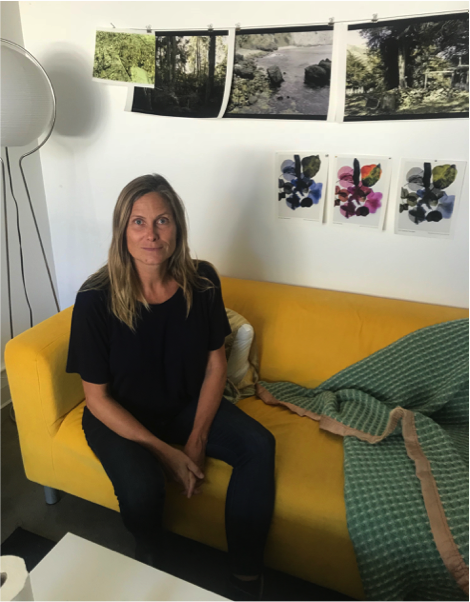By Vinny Leonelli
Individuals such as Lisa Jevbratt, with UC Santa Barbara’s Center for Information Technology and Society (CITS), are currently evolving our understanding of how technology is moving forward to address issues we face today.
Originally from Vaxholm, Sweden, Jevratt is an expert in data and internet visualization. She is a professor in the Art Department and the Media Arts and Technology (MAT) graduate program.
With the help of color vision scientists, Jevbratt created an app called Zoomorph that allows you to see the same way animals do. There are other species living among us and by using this app, we can see the world in a different perspective, she says.
Even when she dives into a project that doesn’t deal with technology, such as an artistic venture that creates a use for invasive plant species by using their natural dyes in sheep wool blankets, Jevratt falls back on her programming knowledge.
Her research projects and collaborations with students within the MAT program might help explain where technology is headed in the near future. Jevbratt believes that technology will affect every field and job market for a long time—that its influence in our everyday lives is unavoidable.
I had the opportunity to interview professor Lisa Jevbratt, who answered questions about her work and the future of technology.
Q. What are some of the works you have done in the past and what is the significance of those projects?
A. I've been working with programming since the 90s, which is quite some time, so there's a lot I can talk about. In terms of media art and digital artwork, the stuff that got me started really was data and internet visualization, so I wrote a lot of crawlers and collected the data and made some sort of visualization of the data. I also made software for other people to use visualization with. It was a little bit of a hacking feeling like going behind the scenes in finding out what's going on in the internet and where stuff that we would typically not see is, and allowing users to find stuff that you would not usually be able to find.
In terms of media art, what I've been working on recently is software simulators that portray how animals see colors. I’m using this data to simulate something and make people aware of the fact that there are other ways of seeing out there. There all these other creatures existing parallel to us and they have their own world.
Q. I understand your primary interest in technology pertains to biofeedback and internet visualization. How can you explain their importance to the progression of technology?
A. Any kind of interactive system involves this sense of a feedback loop where we're behaving in some way, and then the system that we’re interacting with is behaving in some way, and it changes our behavior and so it changes its behavior. I was working with heart sensing, and heart sensors never got anywhere.
Data visualization is extremely important. What we have nowadays are these enormous data sets and we don't have a way of understanding them. We have to have a way to look at the data and have people turn that into information, using our aesthetic sensibilities because it's just too much data for us to sort through. So, I think data visualization has been and will become even more important. The more data we have, the more important those alternative ways of understanding data will be.
Q. What kinds of things did you work on in the MAT program?
A. The project I worked most closely with was an animal vision project with a student in the MAT program. I’m still working on the animal vision project right now, but the students who were working on it aren’t here anymore. I know a lot about programming but not so much about the mathematical programming. So, since those students left, I have encountered some frustrating situations.
Right now, my own work has become more about natural dyeing of wool and other non-technological stuff so that means I haven’t really been seeking out the collaborative.
Q. What would make it worthwhile for someone who doesn't know about applying technology to art to want to study in MAT?
A. Everything around us is built off these artificial languages, so in order to understand what’s happening in the world, we need to know these languages. I think everybody needs to have some basic understanding of how this world functions. Understanding programming can really help shape science, help shape production, help shape art and culture. It can really make a difference in those fields because everyone is using computing for anything. Solving problems from a creative perspective—I think it’s really powerful.
Q. Do you think in the future the number of tech jobs available might flatten out, or will there be endless opportunity?
A. I think it will be growing for a long time. Technology will be part of every field. Even when I do my spin yarn or whatever, I still fall back on my programming knowledge. It’s always there for me. Technology will be a part of every job, basically. You can’t avoid it. I mean I wish we could avoid it but I don’t think it is very possible. Programming will get anybody a job because it is an important part of the job market.
Vinny Leonelli is a fourth year UC Santa Barbara student majoring in Art.


